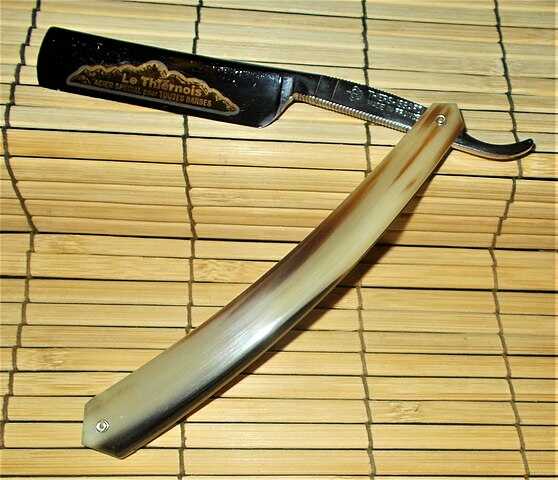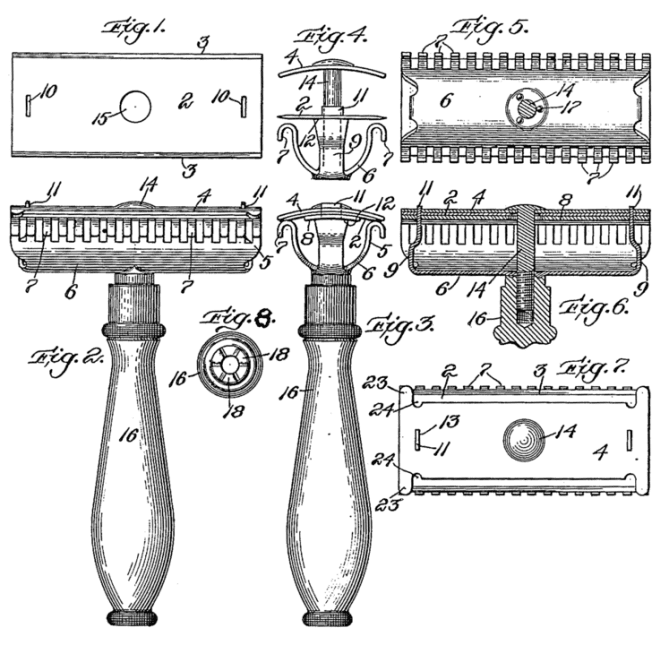A total of 51 razors and 150 blades were sold in the first year.
From a simple salesman, he became one of the top entrepreneurs and innovators in the United States. He became one of the millionaires in the world at that time.
Gillette
We are all more or less familiar with this international brand, ‘Gillette’. Although originally known for shaving cream and razors, Gillette today stands as a monopoly in the world of body care products. From deodorants to soaps to fairness creams, Gillette has launched all kinds of cosmetics.
The ‘king’ of our story is none other than the founder of Gillette, King Camp Gillette.
Yes, out of sheer desperation, he came up with a plan to launch a novel product. And that ‘wonder’ product is the razor and blade. While blades are integral to our daily lives in the 21st century, a hundred and fifty years ago, no such item existed in the world. But how did Gillette discover the blade? Let’s go back to that story.
Straight razor
Until the beginning of the 20th century, the only shaving tool was the straight razor.

A straight razor is a razor with a blade that can fold into its handle. They are also called open razors and cut-throat razors. The predecessors of the modern straight razor include bronze razors with cutting edges and fixed handles, produced by craftsmen from Ancient Egypt during the New Kingdom (1569–1081 BC). But the problem is that if you are a little careless while using this device, bleeding is inevitable. Sometimes the infection spreads from the wound, resulting in the deaths of some people. Gillette also had a scar from a wound caused by those old shaving razors. At one time, he thought he would grow a beard to cover the scar. But it was no use.
Safety razor
The guard razor, which added a protective guard to a straight razor, was a crucial step towards a safer razor. Jean-Jacques Perret likely invented the first one around 1762, inspired by a joiner’s plane. Early versions had comb-like teeth and were one-sided, but later improvements made them reversible.
In 1847, William S. Henson described the basic razor design with a cutting blade at right angles to the handle, including a comb tooth guard that could attach to both the hoe form and a regular straight razor.
The term “safety razor” was first seen in a May 1880 patent application filed by Frederic and Otto Kampfe of Brooklyn, New York. Their design had a hollow metallic blade holder, creating a smooth bearing for the plate on the skin while allowing the razor to cut hair without danger to the skin. They manufactured these razors under the “Star Safety Razor” brand.
In 1901, King Camp Gillette patented a pivotal innovation: a safety razor using disposable double-edge blades, which was granted in 1904.
Gillette made this blueprint in 1895. Although it took him 6 long years to implement it.
Basically, he divided this shaver into two parts: the stand and the blade. While the stand is recyclable, the blade, i.e., the sharp metal part, is disposable or single-use.
Even though he created the blueprint for this device, he is not a technician. As a result, he has to rely on others to make the instrument. And therein lies the problem. A machine that no one has ever seen or heard of—is it easy to make? On top of that, Gillette claims that its blades should be manufactured at a low cost. That is disposable. As a result, buyers will not buy at high prices. Naturally, most technicians turned back to Gillette. Finally, an MIT engineering graduate student, William Nickerson, agreed to try to implement his proposal.

In 1901, Nickerson created the first prototypes of Gillette razors and blades. Made of carbon steel, the sharp blade was only one and a half inches by one inch. Then some more changes were made to it. The middle of the metal sheet is attached with screw holes. Because this blade had to be attached to the stand or razor with screws. But what did this blade look like? Many people may have this question! The blade we use today is the exact same shape and size as the Gillette blade. Or, better said, the blades made by Gillette have been used unchanged for almost a hundred and twenty years. That topic will come a little later.
Production
Anyway, after that, in 1903, King Gillette built a factory in South Boston. Commercial production of safety razors begins. By then, he had applied for a patent. But the results of the first year were not very promising. A total of 51 razors and 150 blades were sold that year. However, that was the beginning of the revolution. In 1904, around 91,000 razors and 1.5 million blades were sold. In 1906, his business spread to all the powerful countries of the world, including Canada, Germany, England, and France. Even in World War I, the United States bought razors and blades wholesale from Gillette for the safety of soldiers. Each soldier was issued a Gillette safety razor. 3 crore and 2 million blades were used in the army alone.
Fortune
This business made him a millionaire in just a few years. He also became the richest man in Boston. Because he had no rival in this market. In 1904, the patent for the safety razor was next to his name. As a result, it becomes impossible for other companies to reproduce the device. Nickerson, on the other hand, received the patent for the blade. Several companies started producing blades after purchasing the rights from him. As the only device to use a blade was the Gillette razor, they also followed the design of Gillette in making the blade. Which remains unchanged even today.
Gillette died in 1932. After that, other manufacturers made their debuts in the world of safety razors. To put it another way, King Camp ruled the world of shaving for about 3 decades. From that point of view, it is not wrong to call him a king.







